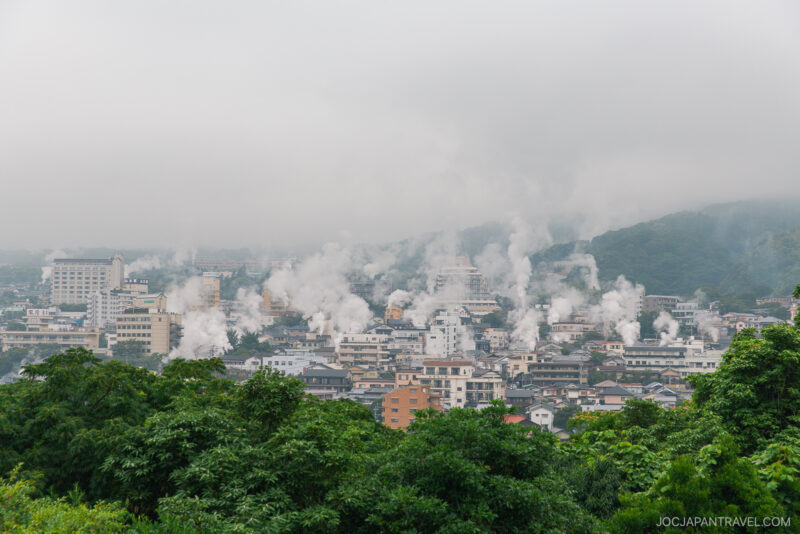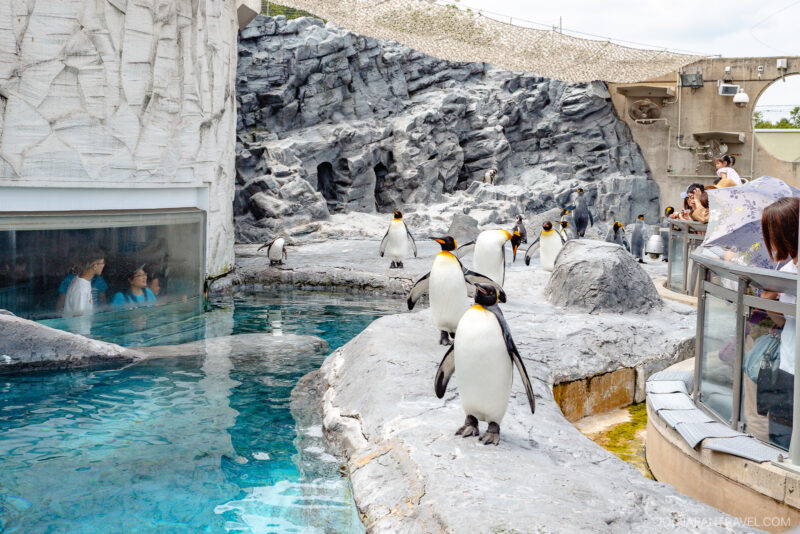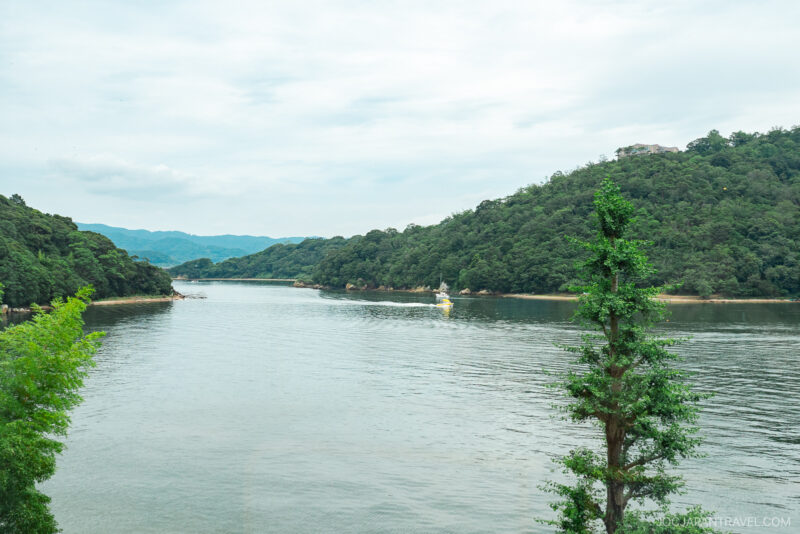This post may contain affiliate links. Please read our disclosure policy.
Kurashiki, just 15 minutes from Okayama, is a town where Edo-period canals meet modern creativity. Its Bikan Historical Quarter is a beautifully preserved district of willow-lined waterways, historic warehouses, and artisan culture that feels like stepping back in time.
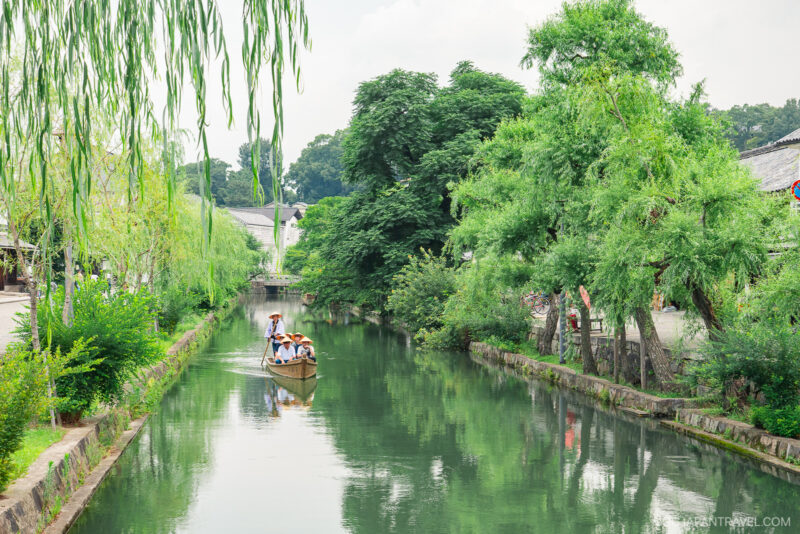
Why You Should Visit Kurashiki
Kurashiki is often nicknamed “Japan’s Little Venice,” thanks to its canals, stone bridges, and white-walled storehouses. Once a busy merchant hub, today it feels more like an unhurried stroll through history, where the kura now hold cafés, galleries, and little shops full of charm.
No Visit to Kurashiki Is Complete Without the Bikan Historical Quarter
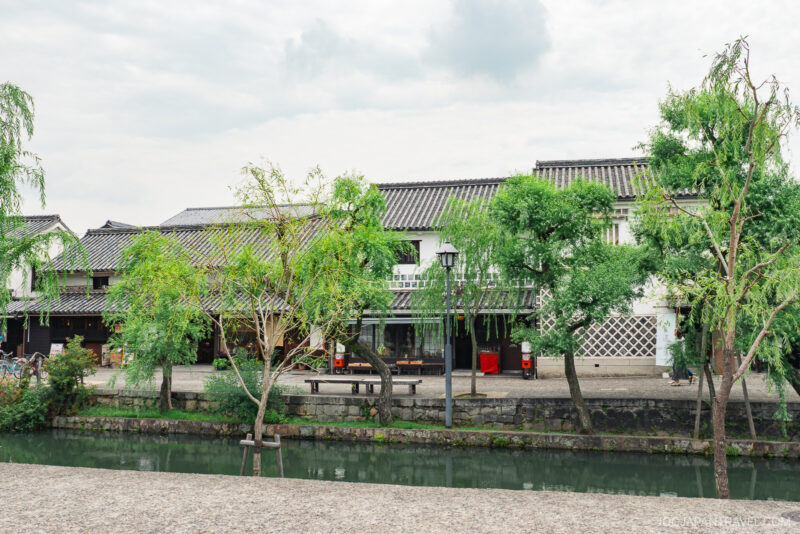
The Bikan Historical Quarter (倉敷美観地区) is the centerpiece of any trip to Kurashiki. With its willow-shaded waterways, kura storehouses, and 19th-century architecture, it has the atmosphere of a living museum. We were captivated from the moment we stepped inside. This area tells the story of Kurashiki’s rise as a merchant town and its transformation into one of Japan’s most charming cultural neighborhoods.
How Kurashiki Became a Canal City
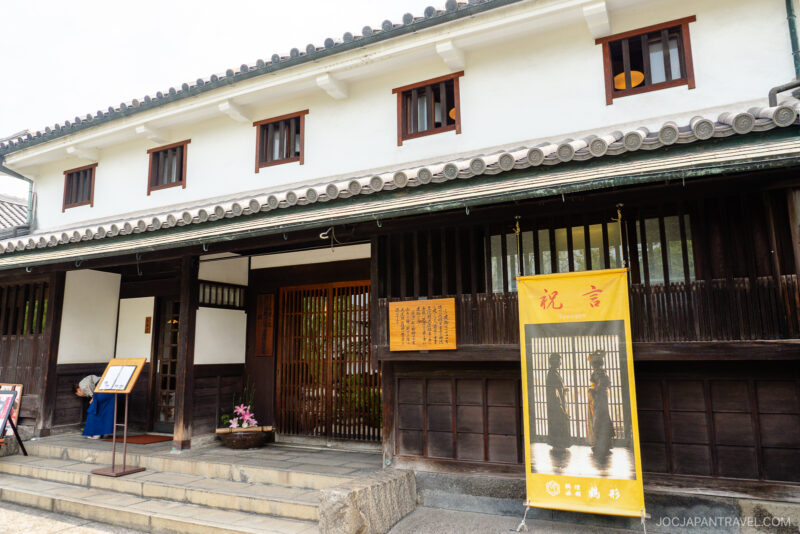
The name Kurashiki literally means “town of storehouses.” During the Edo period (1603–1868), it was a major rice distribution hub, connected by canals that carried goods to Osaka and Edo (now Tokyo). The kura storehouses, built with striking white plaster and black-tiled roofs, lined the waterways. As shipping modernized, the canals declined in importance, but restoration efforts in the 20th century revived the area, preserving it for future generations.
Today, those warehouses have been reborn as cafes, craft shops, and small museums. The canals themselves are alive again, with flat-bottom boat rides that let visitors glide quietly through history.
Exploring the Bikan Historical Quarter
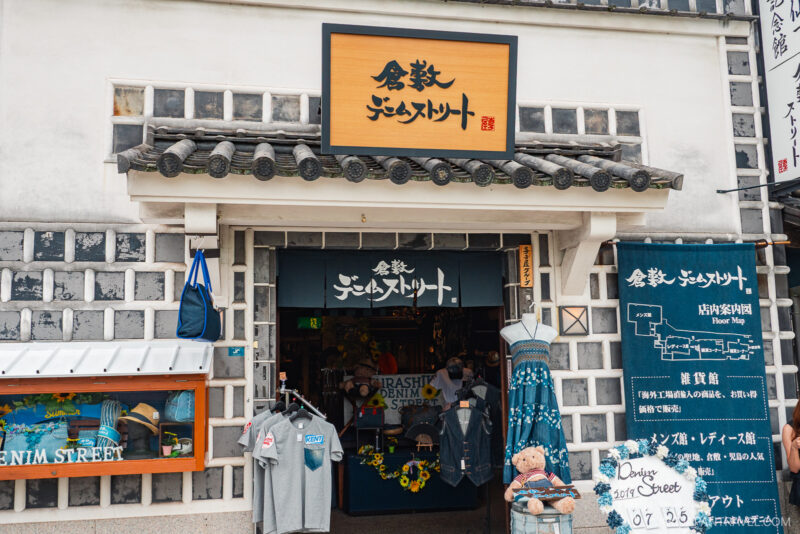
We easily spent half a day here just strolling, browsing shops, and enjoying the slow pace.
Highlights include:
- Canal boat rides: Piloted by guides in Edo-style dress, these short rides are charming and photogenic.
- Historic architecture: The kura buildings, stone bridges, and willow trees create postcard-perfect scenes.
- Side street shopping: Narrow lanes are filled with craft shops, Kurashiki denim, ceramics, and snack stalls.
- Cafes and rest stops: Many kissaten and modern cafés serve seasonal wagashi or fruit parfaits inside old kura buildings.
Why We Love the Bikan Quarter
What made our visit so memorable was the quiet setting, car-free streets, and cultural details everywhere we looked. Unlike Kyoto’s Gion or Takayama’s old town, Kurashiki still feels local and refreshingly uncrowded.
Dining in Kurashiki – Where History Meets Flavor
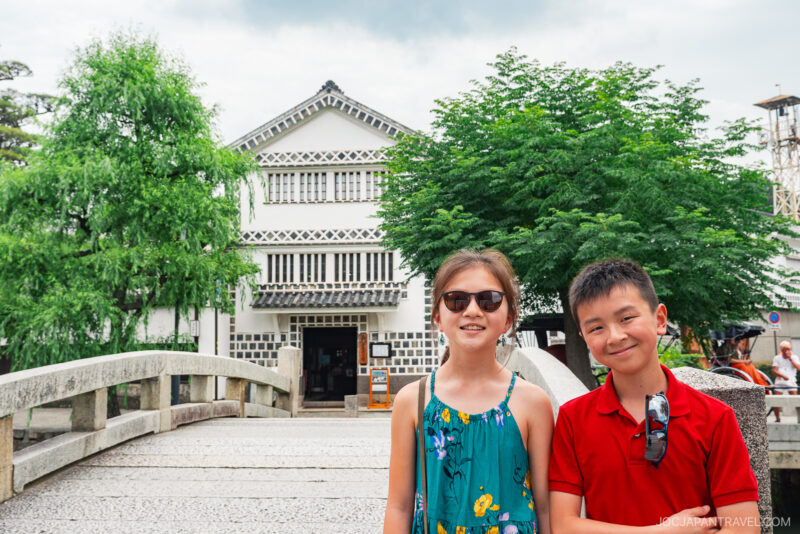
Dining in Kurashiki is a delightful experience that goes beyond just food. Meals often come with canal views, local history, and a strong sense of place. From soba houses to modern cafes in renovated kura, there are plenty of choices to pick from.
Kurashiki Restaurants and Cafes
Kamoi – Soba by the Canal
We chose Kamoi for lunch and loved its serene setting overlooking historic warehouses. The menu featured cold and hot soba, freshly made sushi, tempura, and bento-style sets. Everything was delicious, and the view made it even better.
Yuurin-an – Historic Teahouse With a Twist
For an afternoon stop, Yuurin-an Guesthouse & Cafe offered a cozy vibe and seasonal dishes. We tried shaved ice with fruit toppings, tai-meshi (sea bream rice), and even a wild boar shabu-shabu rice bowl. Their drinks menu, from matcha to local coffee, was also excellent.
Kurashiki Snacks and Regional Treats
- Murasuzume from Kikkodo: A delicate, crepe-like pancake filled with red bean paste.
- Kibidango from Koeido: Sweet millet dumplings coated in kinako, tied to the Momotaro legend.
Traveler tip: Many shops sell boxed versions of these sweets, perfect as souvenirs.
Beyond the Bikan Quarter
If you have extra time, Kurashiki also offers:
- Ohara Museum of Art (大原美術館): Japan’s first museum of Western art, with works by Monet, Gauguin, and El Greco.
- Kurashiki Ivy Square: A red-brick textile mill turned cultural complex.
- Folkcraft and Toy Museums: Small but charming glimpses into Japan’s local artistry and childhood culture.
How to Get to Kurashiki
From JR Okayama Station, take the JR Sanyo Line to Kurashiki Station. Trains run every 10 to 15 minutes. Travel time is 15 to 20 minutes.
From Kurashiki Station to Bikan Quarter
- Walk south for about 10 minutes to the canal area.
- Follow signs for Kurashiki River and Bikan Historical Quarter.
By Car
- From Okayama, take National Route 2 west to Kurashiki. Drive time is about 30 minutes.
- Paid parking is available around the Bikan area. Lots fill on weekends and holidays.
Pro Tip
Pro Tip: Visit early morning or just before sunset for softer light and fewer crowds. The quarter is pedestrian friendly and cars are restricted inside the historical zone.
Is Kurashiki Worth Visiting?
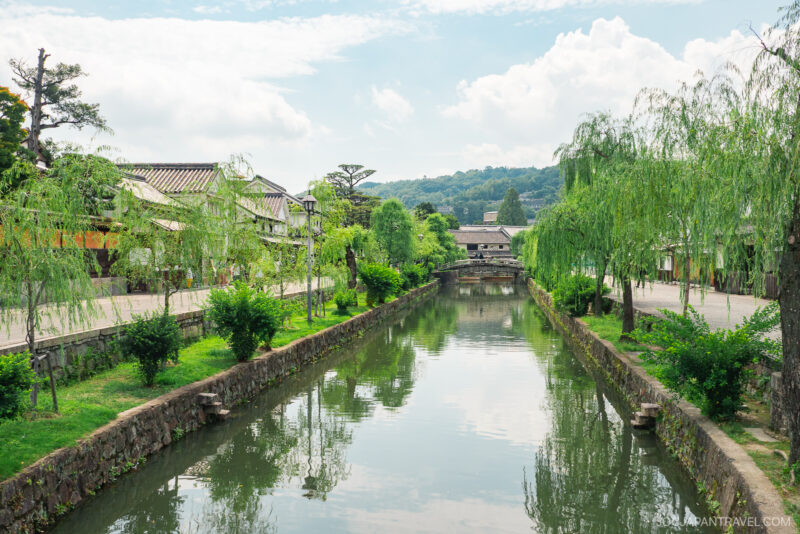
Kurashiki is absolutely worth adding to your Western Japan itinerary. The Bikan Quarter is one of the most atmospheric districts we’ve visited. From canal boat rides and kura architecture to artisan shopping and memorable meals, the city combines culture and comfort in a way that stays with you long after your visit.
More to Explore Nearby
If you’re based in Okayama, Kurashiki makes a perfect side trip. Nearby highlights include:
- Okayama Korakuen Garden – One of Japan’s Three Great Gardens.
- Okayama Castle – Known as “Crow Castle” for its striking black walls.
- Naoshima Island – A ferry ride away, world-famous for contemporary art.
- Kibitsu Shrine – A historic shrine tied to the Momotarō folktale.

